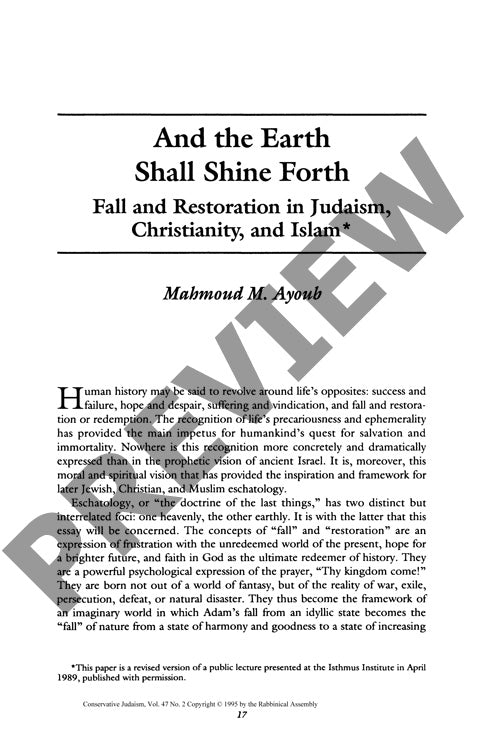And the Earth Shall Shine Forth Fall And
Couldn't load pickup availability
Across Judaism, Christianity and Islam, visions of cosmic fall and divine restoration emerge most powerfully during periods of historical persecution and displacement, with the magnitude of anticipated redemption directly reflecting the depth of communal suffering. Through analysis of classical texts, prophetic literature, and theological commentaries, striking parallels emerge in how these three Abrahamic faiths conceptualize the cycle of decline and ultimate renewal. The evolution of messianic expectations spans from ancient Hebrew prophecy through medieval rabbinic interpretation, incorporating the cosmic repair theology of Lurianic Kabbalah and Maimonides' rationalized messianism. In Christianity, early apocalyptic literature and patristic interpretations frame expectations of Christ's millennial reign. Islamic traditions, both Quranic and post-Quranic, develop distinct eschatological frameworks, particularly in Shi'i thought regarding the hidden Imam. Despite their theological differences, these eschatological systems function as moral philosophies of history, offering psychological consolation during adversity while asserting divine sovereignty and ultimate justice. A comparative religious methodology reveals remarkably consistent patterns across all three faiths in their understanding of cosmic fall, historical tribulation, and the final restoration of divine rule.

More Information
-
Physical Description
-
Publication Information
Published 1995
ISBN
-
Publication Credits
Mahmoud Ayoub

